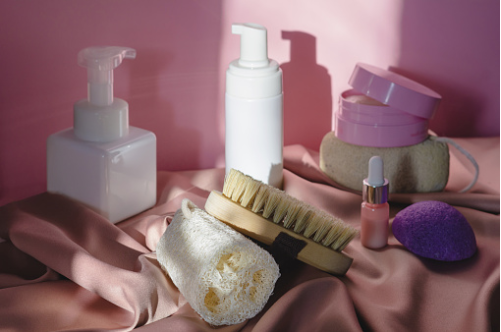Amorphophallus konjac, also referred to as konjak or konnjaku, is a perennial herb. There are multiple uses of konjac. It includes blood sugar, blood fat, blood pressure, weight loss, laxative, and appetizer, among others. Most of the known Konjac Sponge Suppliers sell quality Konjac Sponges of various types, such as Bamboo Charcoal Konjac Sponge.
However, you cannot eat the konjac plant in its raw form because the entire thing is poisonous to health. Well, to know its manufacturing process, let’s learn its history first.
Konjac sponges are very gentle on the skin people who prefer non-chemical makeup products use konjac sponges for cleansing their skin daily. Moreover, with a charcoal konjac sponge, you can take off all makeup.
When used with soap and water, konjac sponges will remove more makeup than washing with your hands alone. You can even run one around your eyes to swipe away mascara.
The History of Konjac
Konjac cultivation dates back at least 2000 years in China, where it has a long culinary history. Later, it came from China to Japan, and people started liking it as a food remedy for the Japanese.
It is almost a requirement for every meal, the most common folk food in contemporary Japan and in some regions of the country. Moreover, meals for primary and secondary school students explicitly state where they must include konjac food.
The Nutrient Content of Konjac
Konjac has a special ability to prevent diabetes and hypertension because it contains 16 different types of amino acids, ten different types of trace minerals, and opulent food fiber.
One could argue that konjac, which is low in heat, fat, and sugar, is superior to other foods in terms of its ability to prevent and treat common chronic digestive diseases. Furthermore, it prevents colon and breast cancer, as well as obesity.
As a result, it is clear that konjac is a type of “God-given medicine” that has many health benefits.
Because the Bamboo Charcoal Konjac Sponge is so gentle and all-natural, Japanese farmers first used it to wash babies’ skin. Use the sponge liberally all over your body, paying particular attention to any areas that may be acne-prone and require a more thorough cleaning.
Manufacturing Process of Konjac Sponge
The raw material for PUSPONGE KONJAC comes from the wild konjac plant, which grows between 600 and 1400 meters above sea level in a mountainous region. A special natural plant fiber deep cleans the skin and protects it from dust.
Additionally, the reduction of various environmental pollutants in contemporary society guarantees that you have beautiful skin and a healthy appearance.
1. Combine Calcium Hydroxide and Konjac Powder with Cold Water.
To produce a konjac sponge, even in mixing, thoroughly combine the ingredients. If the mixture contains air and powder, you won’t get the right result. Hence, you must take care during this process to obtain the highest quality.
2 Pour the Mixture into The Mold Quickly.
To ensure that no air or bubbles enter, you should carry out this procedure carefully, step by step. Konjac is a liquid that hardens instantly, so if you pour it too slowly, it won’t form properly.
3. Solidify the Konjac.
The sponge is still jelly-like at this point. They gradually become a firm texture when they are allowed to sit on the shelf. To make the konjac creamy and soft, let the solidification process take its time. This process is essential for putting spongy surfaces in place.
4. To Make the Konjac Completely Stiff, Simmer It For 5 Hours on A Rack.
Make konjac edible by continuing the “Alkali Heat Solidification” process. As the heat permeates the konjac’s interior until the complete hardening of the sponge, the process continues.
If the process seems complex, you should contact an authentic Konjac Sponge Manufacturer to buy a bulk quantities of konjac sponges.
5. Konjac Sponge That Is Shaped
When the konjac is done but still hot, put it in a pot of water to let the interior gradually cool. Additionally, in the heat, freshly made konjac doesn’t taste good.
6. Process of Konjac Drying
Air drying is a low-cost and traditional drying method, but the shape is much smaller, and the surface is atrophic and uneven when dried.
Freeze drying is a new drying method that is relatively expensive but results in more regular and beautiful shapes when dry. It also absorbs water more quickly the first time it is used, which is better for the user experience of the customer.
The konjac sponge gently exfoliates your skin, removing any remaining dead skin cells and revealing a smooth, radiant complexion. Additionally, the effects will become more noticeable the more you use the sponge. Just remember not to expect the insanely glowing skin you would get from a peel or an excellent facial.
Find the highest quality Konjac Sponge Wholesale from the top Konjac Sponge Manufacturer in China. Softcare brings good quality products for all women around the world, and for this, Qingdao Softcare Products Co., Ltd. has recently developed SOFTCARE!



